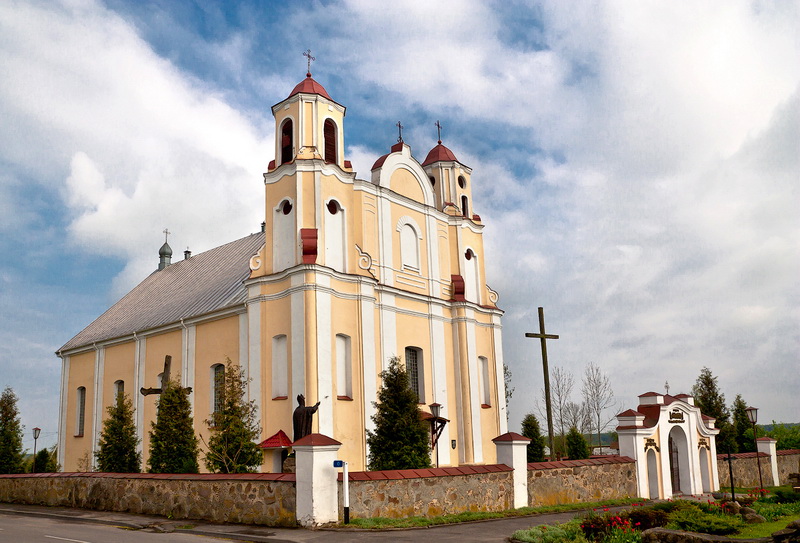History of Creation
The church was built in 1769 on the initiative of the Catholic clergy and local patrons. Over the centuries, the temple has witnessed various historical events, including wars and changes in political regimes. In the 19th century, it remained an important center of spiritual life for Catholics in the region. During the Soviet period, the church, like many other religious buildings, was repressed, but despite this, it was not destroyed and has survived to this day. In the post-Soviet period, the temple was fully restored, and today it can be visited by taking a tour from Minsk or other cities of Belarus.
Architecture and Spiritual Life
The architectural appearance of Vasilishki Church represents a classic example of Vilnius Baroque with elements of late Renaissance. The facade of the building is decorated with elegant pilasters, decorative niches, and sculptures of saints. The interior impresses with its grandeur: a luxurious altar, frescoes, ancient icons, and a carved pulpit give the church a special atmosphere.
Vasilishki Church continues to fulfill its main function – being a center of spiritual life for Catholics in the region. Regular services, festive masses, baptisms, and weddings are held here. Every year, the church is visited not only by pilgrims but also by tourists interested in the history and architecture of religious buildings in Belarus.
Tours with a Visit to the Church
Vasilishki Church of St. John the Baptist is included in the routes of many excursion programs. Tourists can book a tour around the Grodno region to see this unique temple along with other landmarks of the region. Additionally, tours from Minsk are available, allowing visitors to explore the rich historical heritage of the western part of Belarus.
Tours around Belarus that include a visit to Vasilishki Church provide an opportunity not only to admire its magnificent architecture but also to learn more about the religious and cultural life of the country. Guides will share legends associated with the church, its fate in different historical periods, and its significance for the local residents.
